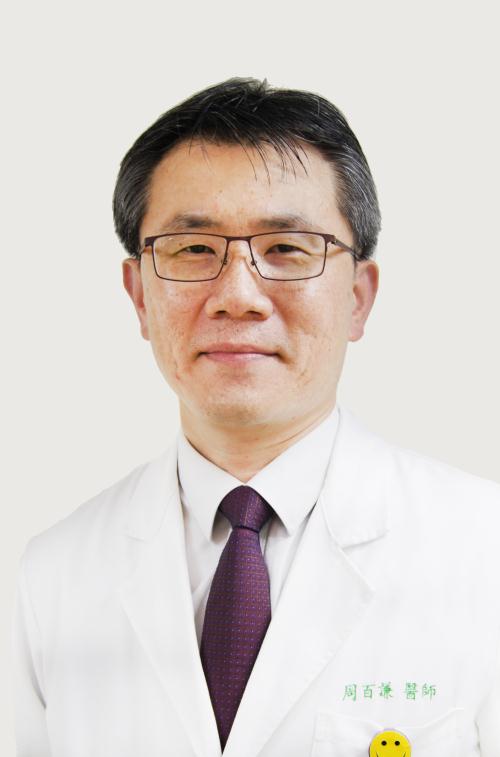TMU Chronic Obstructive Pulmonary Disease Team
Prevention is better than cure

Dr. Pai-Chien Chou
Director, Department of Business Development, Taipei Medical University Hospital
Director, Division of Thoracic Medicine, Department of Internal Medicine, Taipei Medical University Hospital
Open your window in just about any busy city in the world and take a deep breath. That is, if you dare risking the coughing, congestion, and inflammation that comes from a lungful of urban pollution. While these symptoms are a nuisance for healthy people, for patients suffering from chronic or serious lung disease, the matter could be one of life and death. But at least you can retreat to your home to enjoy the clean air, right? According to work done by Dr. Pai-Chien Chou, Taipei Medical University Hospital’s new Director of Thoracic Medicine and his team, your home might not have less air pollution than the bustling streets outside. Dr. Chou’s cutting edge work combining advances in medication, rehabilitation, and technology should help provide a solution.
Dr. Chou came to TMU Hospital in May of 2018 after almost two decades in thoracic medicine at Chang Gung Hospital. In part he wanted to join his classmate from the Imperial College of London, now Dean of Medicine at TMU – Dr. Han-Pin Kuo. Dr. Chou also wanted to break away from the status quo in pulmonary medicine. “I tried to join him to do something different compared to the other pulmonary medical specialists,” he said.
After studying thoracic medicine in the UK, Dean Kuo was the first doctor to introduce positive drainage techniques and the use of antibiotics rather than steroids for the treatment of bronchiectasis (a widening of the airways with a buildup of mucus) to Taiwan in the late 90s. Lungs of patients with bronchiectasis lack the changing airway diameter that create the pressure difference needed to force mucus out of the lungs when coughing. The sputum that remains in the lungs becomes a breeding ground for microbiota that can lead to deadly pneumonia. And even if the patient is treated using antibiotics, mucus without bacteria is still inflammatory in nature and can damage the lungs’ mucosal lining. To get rid of the dangerous excess mucus, patients are connected to a positive pressure machine that detects inhalation, adding pressure to help keep the airways clear.
This positive drainage technique combined with antibiotic-steroid treatment is now a mainstay in the treatment of bronchiectasis. Treatments are now being paired with non-pharmacological techniques that use gravity, posture, specially placed pillows, and education in producing good coughs to facilitate the drainage of sputum. This kind of pulmonary rehabilitation can be effective, “We change the fate of some patients, patients willing to follow the steps we teach in pulmonary rehab,” said Dr. Chou.
Starting treatment as soon as possible is important. “If you want to have better life quality, you must start as soon as possible. If you can reduce the bacterial burden, your airway can recover a bit more easily.”
But the drainage process can be taxing, and unfortunately not all patients are able to keep up the regimen of coughing up sputum three times a day for thirty minutes each session. Drinking lots of water can help reduce sputum viscosity, but that itself presents difficulties for people who risk dizziness and falls when they get up quickly at night to visit the bathroom.
Dizziness and weakness caused by hypoxia is a new area of inquiry. “Previously we only noticed that the patient has some airway obstruction or not. But we now found a trend that if a patient has dyspnea (meaning they can’t breathe well) related to airway obstruction due to hypoxia.” This is an important finding related to prognosis, as in a hypoxic environment airway inflammation will become worse regardless of what bronchodilator is used.
High Tech Solutions
Hypoxic situations can be made worse by exertion. Patients hooked up to a pulse oximeter can easily see if they are hypoxic –and need to be hooked up to oxygen- but they might not notice when doing exercise. “The difficulty is that some patients have dyspnea during exercise, [but] they are not aware of the problem. So we use some IoT (the Internet of Things) to detect the hypoxemia conditions during exercise, and then try to reeducate the patients on how to do exercise reprogramming.”
The IoT tracker, which resembles a smartwatch, continuously measures pulse-oximetry and heart rate and uploads the data to a server, and the resulting data can be crunched in servers at the lab in real time. If oxygen or heart rate become too high or too low, patients receive a message on their cellphone or wearable device with advice; for example, instructions to ‘slow down your tempo’, or ‘get to the emergency room immediately!’ if an arrhythmia is detected. “With the oxygen and heart rate we are able to find those patients who are at risk for developing further cardiopulmonary deterioration.”
Patients using this technology can begin with 6 to 10 minutes of endurance training with the heart at a constant workload. As cardio-pulmonary reserve improves day by day, the medical team can monitor progress up remotely using the internet, and help him or her make adjustments in order to make incremental gains. This way, the patient can be more comfortable in daily life.
In the future, more sophisticated machine algorithms will be able to integrate a wide variety of information, including bronchoscopy, CT scans, biopsies, blood samples, and real time physiology tracking, making it easier to provide timely and effective intervention. But the technology is already in the early stages of use. “Regarding the topic of inflammation, we need molecular biology. But regarding the heart rate issue, we just need to ask the patient to wear a watch to make sure that every move is under an adequate oxygen tension.”
Indoor Air Pollution – An Ounce of Prevention
While treatments for lung disease are becoming more effective, Dr. Chou is also putting new technology to use stopping lung disease before it becomes serious. While outdoor air is measured by the EPA (Environmental Protection Administration), with windows in Taiwan seldom opened in the warm summer months, the air quality indoors may be even worse than it is outside. “Even though we think it’s clean, at night you may have a cough or sore throat. This is due to dust or other particle matter that is caught in bedding. It’s not easy to detect. If you live in an area with crowed traffic, chemicals can enter your living area on your body.”
These chemicals are persistent; they may persist for up to five years or more before naturally degrading. More dangerous than regular allergens that may lead to similar symptoms, these chemicals can damage the lungs’ cilia, directly entering the sub-mucosal area and causing inflammation. What’s worse, some people with this kind of nasal obstruction end up breathing through their mouths during sleep, allowing even more pollutants to enter their large airways and eventually the alveoli; according to Dr. Chou it is one possible explanation why some non-smokers are diagnosed with lung cancer. Diesel compounds are a major threat, as are VOCs (volatile organic compounds), but this can be hard to prove without biopsy data.
Dr. Chou and his team have now started a program to collect indoor air samples and analyze them using mass-spectrometry. They have found that chemical signatures are different in different cities, in different neighborhoods, and Dr. Chou even suspects that, “There may be different conditions [in buildings] sharing the same door. The first floor, second floor, third floor maybe are different.”
To address this issue, Dr. Chou is developing an inexpensive air purifier that uses special materials targeted to filter out pollutants found in samples from each specific indoor environment. The targeted filtration can then reduce irritation in the mouth and airways, leading to better sleep and hopefully lower rates of lung disease.
This air quality data could also be linked with Dr. Chou’s artificial intelligence algorithm in a service that should be up and running soon. Indoor air samples from the homes of patients with lung disease will be sent to the hospital server where the AI algorithm can come up with the most effective combination of bronchodilators and anticholinergics that can be used before an emergency. “We try to solve the problem from the air, not just from detection [in the body].”
A Bright Future
Dr. Chou and his team are working on a host of promising technological innovations, drug treatment improvements, and pulmonary rehabilitation strategies. In the fight against lung disease, hopes are high for using the growing number of weapons in novel combinations – something made possible by advances in computing power and modern health tracking technology similar to what you might wear on a jog. According to Dr. Chou, the future of pulmonary medicine looks bright. It’s a good time to become a pulmonologist.
For interviews or a copy of the paper, contact Office of Global Engagement via global.initiatives@tmu.edu.tw.








